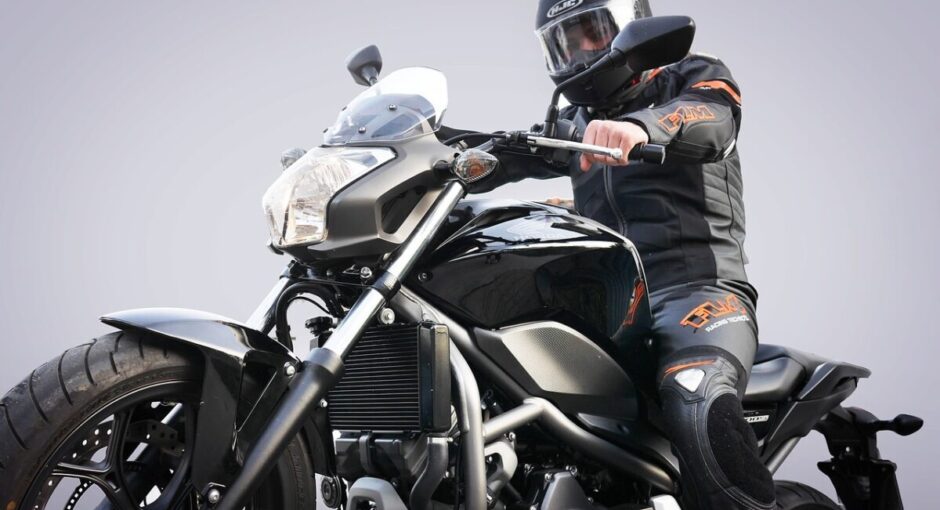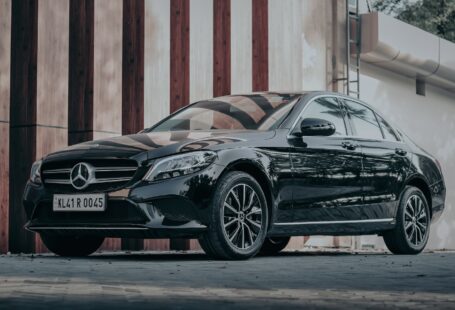Does it make sense to start building a custom bike by paying full price for a machine loaded with factory-fresh equipment that you are just going to toss into the dumpster in favor of more unique custom parts and paint?
What if you could get that same low-slung, late-model, cruising machine at a fraction of the invoice price? The catch is you’re gonna hafta paint the tank, recover the seat, and ditch some of the attached peripheral equipment. What? You were gonna do that anyway? And for no extra charge, any silly chromed plastic piece is probably busted to bits. If that sounds good, then you’ve come to the right place.
In this case, that place happens to be Cycle Outlet, in Cumberland, Maryland. Marvin Lutz and his crew have been salvaging written-off bikes for penny-pinching bikers like us. Last year alone, Cycle Outlet gave 300 bikes a new lease on life and 300 riders a chance to buy a bike they may not have been able to afford otherwise. So what if the title says “salvage” on it?
Lutz, a former motorcycle dragracer, is a bike enthusiast who knows what his customers want. He has a row of dusty old classics and near-classics that he hopes to restore when Cycle Outlet’s explosive growth is under control. If cut, Lutz might bleed Kawasaki racing green, an observation based on his collection of H1, H2 Eddie Lawson Replica and Z-1R bikes. He’s also built a monster Kawasaki ATV with a KLR650 four-stroke single stuffed into it, in a very sanitary (and fast) conversion.
Cycle Outlet is able to find ideal candidates for “project: bike resuscitation” for several reasons. Lutz has cultivated a Rolodex of insurance-industry types and brokers who shop at salvage auctions, and these connections give the company access to a large volume of repairable bikes. This gives the shop about 60 to 80 repairable bikes at any time. Most of these are sportbikes, but there are also some good opportunities to find your new custom cruiser project. “This type of customer isn’t as prone to crashing, ” Lutz observed.
This network of buyers also lets Cycle Outlet avoid hot properties. “We get calls once a week from people we know are thieves, ” Lutz said. “They have everything but an engine and a frame.” Lutz avoids stolen bikes because “it hurts the whole industry.” Cycle Outlet loses some sales to customers who live in areas where they cannot get comprehensive insurance coverage because of the theft rate, he explained. So it doesn’t make sense to buy from the people who create that problem.
Lutz and his crew also buy many bikes that are D.O.A., never to turn a wheel again. But Cycle Outlet makes sure these bikes didn’t die in vain. Instead, their parts revive bikes that have a chance to live. The shop has an inventory of approximately 600 bikes, most of which are parts donors.
Cycle Outlet makes the business work by being able to tell the difference between a donor bike and somebody’s soon-to-be prized possession. This can be harder than it looks. Many bikes suffer abundant cosmetic damage but are intact underneath. Other machines look almost ridable, but suffer from terminal frame damage. Frames can often be fixed, but it is more cost-effective to wait for a better candidate with a straight frame to arrive.
“We only fool with bikes that are structurally straight, ” said Lutz. The key is to identify the true extent of a bike’s damage before buying it, so he doesn’t pay for a repairable bike, only to find it’s actually a parts donor. Cycle Outlet’s shoppers are good at making that call, but they are not perfect. “Even my buyers miss them sometimes, ” he said. “But after so many instances, I can spot them.”
One trick is to examine the seal on the steering-head bearing. If it is pulled away from its seat, something probably moved it. Some damage can be readily apparent once you have a clear view of the frame, but an egg-shaped steering-head bearing will be hard to see unless the fork, triple clamps and steering stem are removed. That dislodged seal tells Lutz he needs to check to be sure. Another clue is to examine the steering stops. “A hard hit wipes them right off, ” Lutz said.
“We won’t sell something we think is questionable, ” he said. “That is only going to haunt you.” Cycle Outlet is in a good position to be picky because of the large number of bikes it handles. If this Shadow is ruined, there will be another one soon. “We take the worry out of buying a wrecked bike, ” said Lutz. “We can say this bike is structurally straight.”
This is the difference between salvage bikes and salvage cars. “On a motorcycle, everything is pretty much visible, ” Lutz confirmed.
The nature of most crashes helps provide useful repair parts to bike breakers, because bikes tend to either hit something with their front end or fall down on their side. If the frontal crash is hard enough to bend or break the frame (usually at the steering head), the bike can donate all of its aft and side parts to fix the crash victim that slid on its side—which tends to tear off exhaust pipes, control levers and side panels.
Gas tanks can get bent up in either kind of crash and the dents can be hard to fix. But Cycle Outlet has an immense inventory of undamaged and slightly damaged tanks that can substitute for the original. The shop also has a bodyman who can knock dents out from the inside, so very little body putty is needed to smooth out the damage.



